The documenta in 2022 was marked by anti-Semitism allegations against the curators of Ruangrupa and the artist collective Taring Padi. But that was not all. 420,000 visitors have come to Kassel so far.
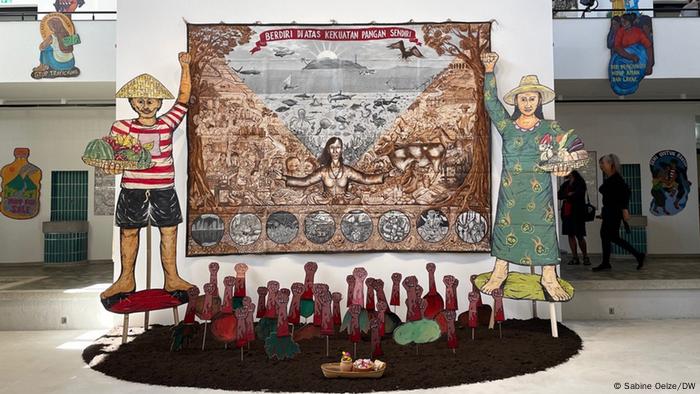
Work by Taring Padi im Indoor pool east
The grass dries up in the hot August sun on the central Friedrichsplatz in Kassel. Here stood the giant banner of Taring Padi. The Indonesian artists' collective had to dismantle it immediately after it opened in mid-June because anti-Semitic motifs had been discovered in it. The cheerfully glowing cardboard cutouts, which were made in workshops with children before the documenta started, have also disappeared. The inhospitable square remains empty.
The documenta has reached its half-time over this. The world arts festival has seen a series of resignations, accusations, apologies and plenty of negative media coverage. There were even calls for a demolition, put forward by politicians, the media and Jewish organizations. “100 days – 100 scandals” is what some in Kassel say.
Scandal-ridden world art exhibition
At times documenta fifteen was even headless: General Director Sabine Schormann resigned. Critics accused her of delaying the anti-Semitism scandal. The artist Hito Steyerl had her video contribution removed in protest. In Berlin, the Bundestag dealt with the anti-Semitism allegation against the documenta makers. Minister of State for Culture Claudia Roth spoke of a “chain of irresponsibility, where in the end nobody wants to be responsible”.
Lastly the city of Kassel and the state of Hesse, as shareholders, have appointed an expert committee. It should help with the processing. But there are already new allegations in the room, directed against a member of the committee, the art historian Marion Ackermann.
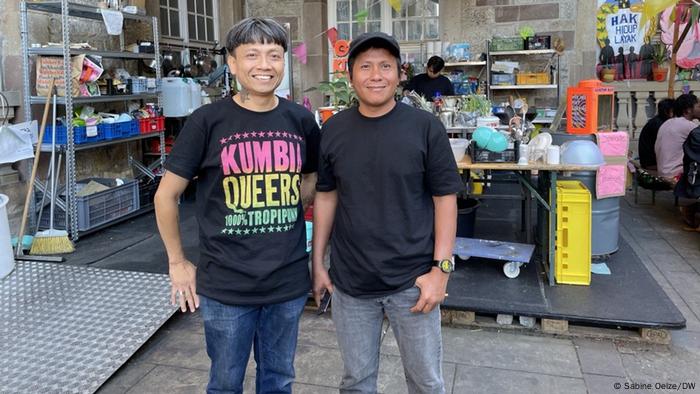
Mirwan Andan and Reza Afisina from the Ruangrupa artist collective
On the homepage of her house, the Staatliche Kunstsammlungen Dresden, a journalist from the Süddeutsche Zeitung discovered works of art with anti-Semitic imagery, the context of which remained unexplained. Is Ackermann a good control authority for the documenta?
Criticism of the selection of the experts
Mirwan Andan and Reza Afisina, two of ten members of the Ruangrupa artist collective, are sitting in the cool backyard of the Fridericianum. “Half-time?” they ask, “we don't count the days. For us, work on the documenta started in 2019 when we were invited to Kassel. Then came the pandemic, thousands of zoom conferences. We're all a lot Traveled back and forth. For us, the exhibition now is just a part of this whole process, which is always evolving.”
Ruangrupa's artistic credo is “Lumbung,” the Indonesian word for a communal rice storage facility. Behind this is the idea of caring, of sharing knowledge and resources, of solidarity.

Debates take place daily in the Ruruhaus
But it is precisely the willingness to engage in dialogue that the curatorial collective misses in the heated anti-Semitism debate and promises to react sensitively. “Taring Padi herself decided to dismantle her artwork,” Ruangrupa recalled in a DW interview, “as a gesture of apology.” The following applies to everyone: “If a work of art offends someone, it must be removed from the exhibition immediately.”
Collectives instead of big names
The curator collective has not had an easy time. Already at the beginning of the year, Ruangrupa members were accused of being close to the BDS movement critical of Israel, which has not yet been proven.

Hut made from bolts of fabric by The Nest Collective denounces the export of old clothes and scrap to Africa
On a tour of the many documenta exhibition locations, topics and projects from all corners of the world can be discovered: some tell of trauma caused by colonialism, others call for sustainability, the observance of human rights, refer to the advantages of participation or the potential of communities. The living and working conditions of artists become visible. Paintings by Australian Aboriginal people are on display as well as works by Roma artists.
Not everything convinces with aesthetic power, some works like well-intentioned political activism. This is what particularly bothers a university teacher couple from Saarbrücken: Lucia Hubig and Albert Herbig discover in the art of the documenta a “paradigm shift”, a contrast to the usual art exhibitions: “We encountered a lot of politics, more than expected, but less art.” The anti-Semitism debate of recent months, say these visitors, “distracts from what else this documenta has to offer”.
Political art dominates the tour
Many a work that attracted attention because of its critical attitude towards Israel is now being eyed by lawyers. This has already happened with the brochure of the Algerian women's collective “Archives des luttes des femmes en Algérie”: “Not relevant under criminal law”, was the verdict. The booklet with drawings by the artists Buhran Karkoutly and Naji Al-Ali was returned to the exhibition and is now lying on a table on the upper floor of the Museum Fridericianum next to all sorts of archive material from the time of the political struggle of the Algerian women's rights activists. Two images, barely larger than a cartoon image, show soldiers wearing a Star of David on their helmets, prompting protests. The still somewhat poor information board should now be supplemented with further explanations.
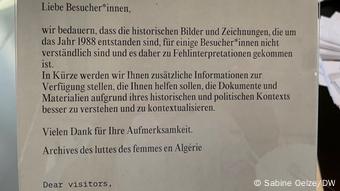
There is only one regret and no explanation
The Romanian Dan Perjovschi was one who left a strong mark on the documenta by covering the columns of the Fridericianum with ironic messages. He is one of the few artists at documenta 15 who does not work in a collective.
Art as a form of resistance
Perjovschi has created a “horizontal newspaper” for Kassel thought up. Drawings on the pavement of the station forecourt record current events as well as observations, conversations and even “hearsay”.
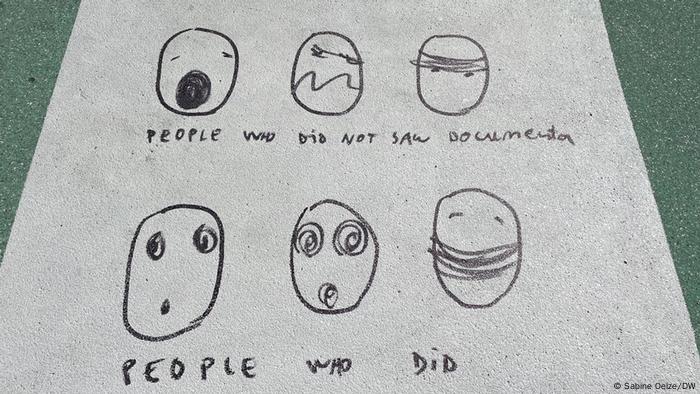
Dan Perjovschi draws a horizontal newspaper during the documenta on the forecourt of the main train station in Kassel
There is also a gap between media coverage and the impressions of visitors: more than 400,000 people have now visited the documenta. Many are surprised by the thematic diversity. Some are happy about the “input from all corners of the world”. Others complain that art is only a tool here to spread striking messages. “This documenta questions the Western perspective, individuality, the art market,” says Dan Perjovschi.
Lineo Seguete from South Africa is also thinking about this. The young woman belongs to the African working group “Another Roadmap Africa Cluster” (ARAC). In Kassel, together with artists from other African countries, she is devising an exhibition and educational program that should help to come to terms with the colonial past, for example with a new writing system.
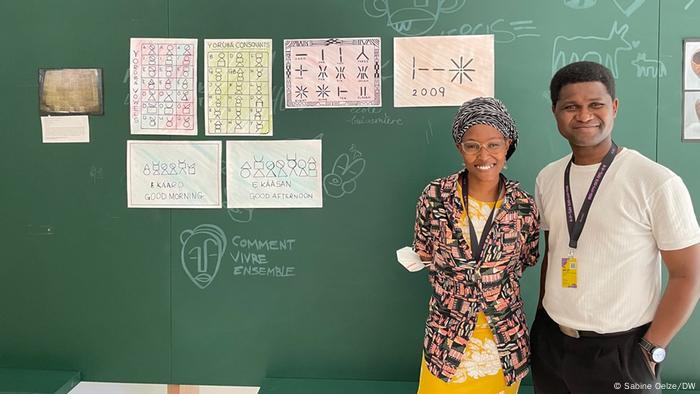
Line Segoete and Quadri Oluwasegun from the Another Roadmap Africa Cluster network
Does it help to shake off the burden of the colonial legacy? Lineo Seguete has been hit by the debates of the last few weeks. “We come here with our experiences such as racism, war, corruption, oppression,” she says, “but these narratives are not directed against our hosts!”
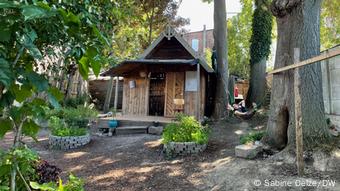
Oasis in a tumultuous art exhibition
What wondrous blossoms this world art exhibition produces, This can be experienced in the backyard of an old Gründerzeit house not far from the main train station: The Vietnamese collective “Nhà Sàn Collective” has created a garden here with rare plants – a green oasis of calm that swallows the noise of the anti-Semitism debate for a brief moment .